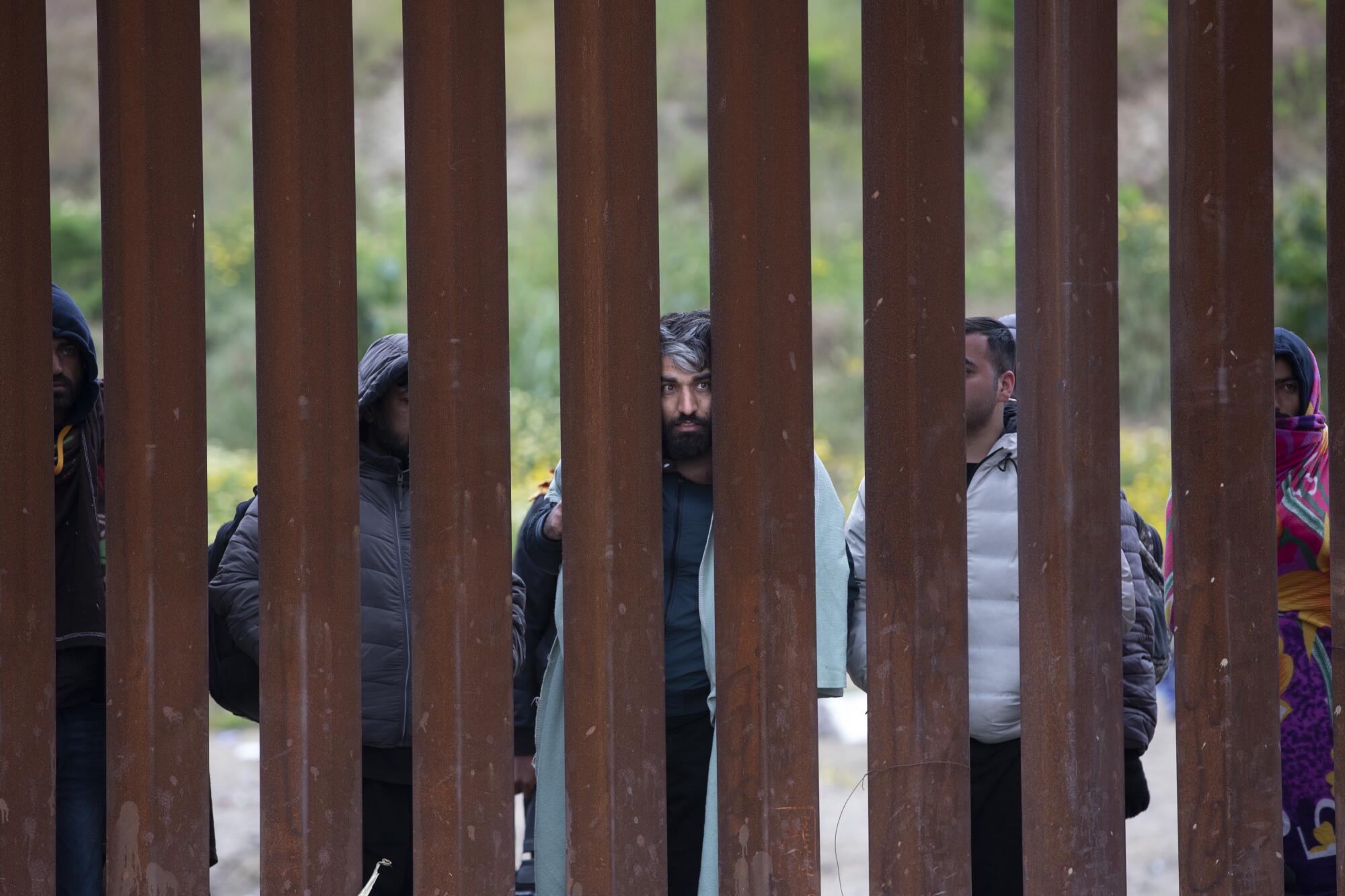
Several migrants interviewed from between the slats in the border wall said they’d been held there by agents for four to seven days without food or blankets.
When a 33-year-old man from Afghanistan who had worked for the U.S. Army as a translator crossed onto U.S. soil from Tijuana, he thought he’d finally made it to a place where he would be safe.
Instead, Obaidullah found himself trapped with more than 100 other asylum seekers in what has become an open-air holding cell between the two layers of border wall. He said Border Patrol agents required them to wait there in custody with no shelter, no food and minimal water, the latest in what has become a pattern for the San Diego sector.
“There are no rights for humans now,” he said from in between the walls Wednesday morning. “They treat us like dogs, like animals.”
Obaidullah, who is not being fully identified out of safety concerns, told the San Diego Union-Tribune he’d already been there five days. Some of the migrants said among them were people who’d been waiting a week already to be processed at a Border Patrol station.
With him were others from Afghanistan, as well as asylum seekers from Ethiopia, Eritrea, Ghana, Pakistan, Somalia and Vietnam. That included a family with a baby who had been there in the cold overnight.
The official boundary between the United States and Mexico is just south of the first layer of wall, which Obaidullah and the other migrants with him had to climb over, under or through in order to reach where they were being held by agents. The wall there is the 30-foot bollard-style barrier put in place during the Trump administration from which many migrants have fallen, resulting in serious injury or death.
Border Patrol has not responded to requests for comment, nor did its parent agency Customs and Border Protection and the Department of Homeland Security.
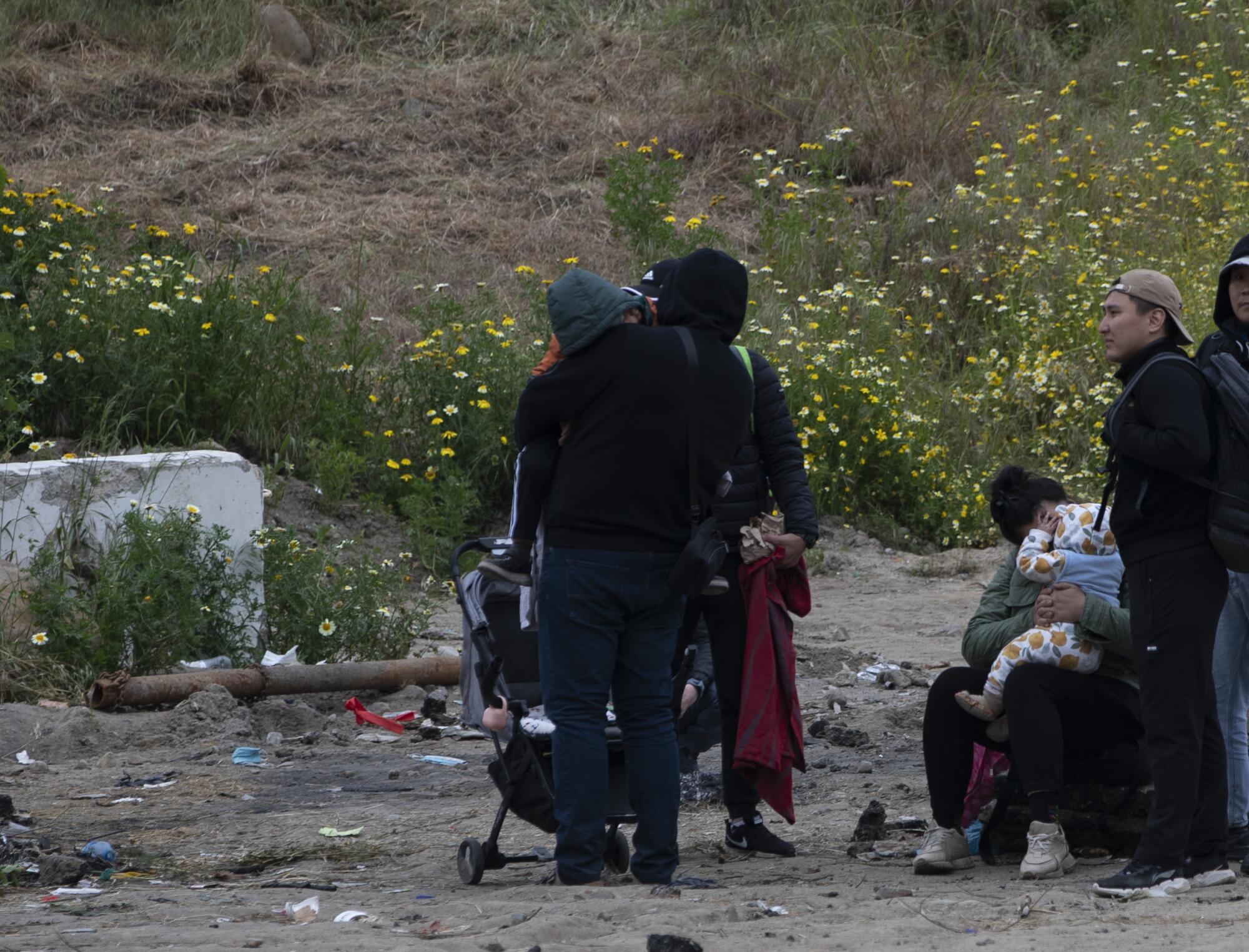
The detention standards for CBP indicate that officials are not to detain migrants longer than 72 hours in holding facilities and that they are supposed to make every effort to move them through as quickly as possible. They must provide people in custody with basic hygiene items and with food and snacks at regular time intervals. Water must always be available to people in CBP custody, the standards say.
The standards do not specify an authority to hold migrants for extended periods of time in spaces such as between the border walls.
“I don’t know what protocols or what guidance Border Patrol is operating under,” said Pedro Rios, director of the American Friends Service Committee’s U.S./Mexico Border Program. “It’s quite clear that those individuals are not intending to evade the authorities or to evade being detained by Border Patrol agents. It’s more the case, from my perspective, that they want to turn themselves in and probably start an asylum case.”
He called the conditions inadequate and noted that this was not the first time he’d become aware of such a group.
“This is an area that does not have any type of infrastructure for someone to be sleeping, to be staying there for a long period of time,” Rios said. “It’s open air. It’s open to people being affected by the elements. It’s a concern that the response by Border Patrol has been to leave people there for a long period of time.”
Since at least October, activists and human rights observers along the San Diego-Tijuana border have told the Union-Tribune about groups of asylum seekers held for days in between the border barriers.
Sometimes they are in between the barriers at Friendship Park near where the wall goes into the ocean. Sometimes they are closer to the Las Americas outlet mall, where last week the Union-Tribune saw an Uber Eats driver making a food delivery from Tijuana through the southern layer of border wall.
The migrants are also often held near the water treatment plant by Monument Road, where Obaidullah was on Wednesday morning.
Obaidullah showed the Union-Tribune documents from his service with the U.S. Army. He hopes to make it to San Francisco, he said, and to apply for a Special Immigrant Visa, a path to permanent residency for Afghans who worked with the U.S. military and meet certain requirements. For translators who are stuck in Afghanistan, there is no way to process their visas since the U.S. Consulate closed with the withdrawal of troops in August 2021. They have to make it to another country where their cases can move forward — a process that can take years to finish.
He said he tried to show his documents to the agents, but that they didn’t seem to care. He said some of the agents were rude to him.
“They say a lot, like, “Go back to Mexico. We don’t need you guys here,’” he said.
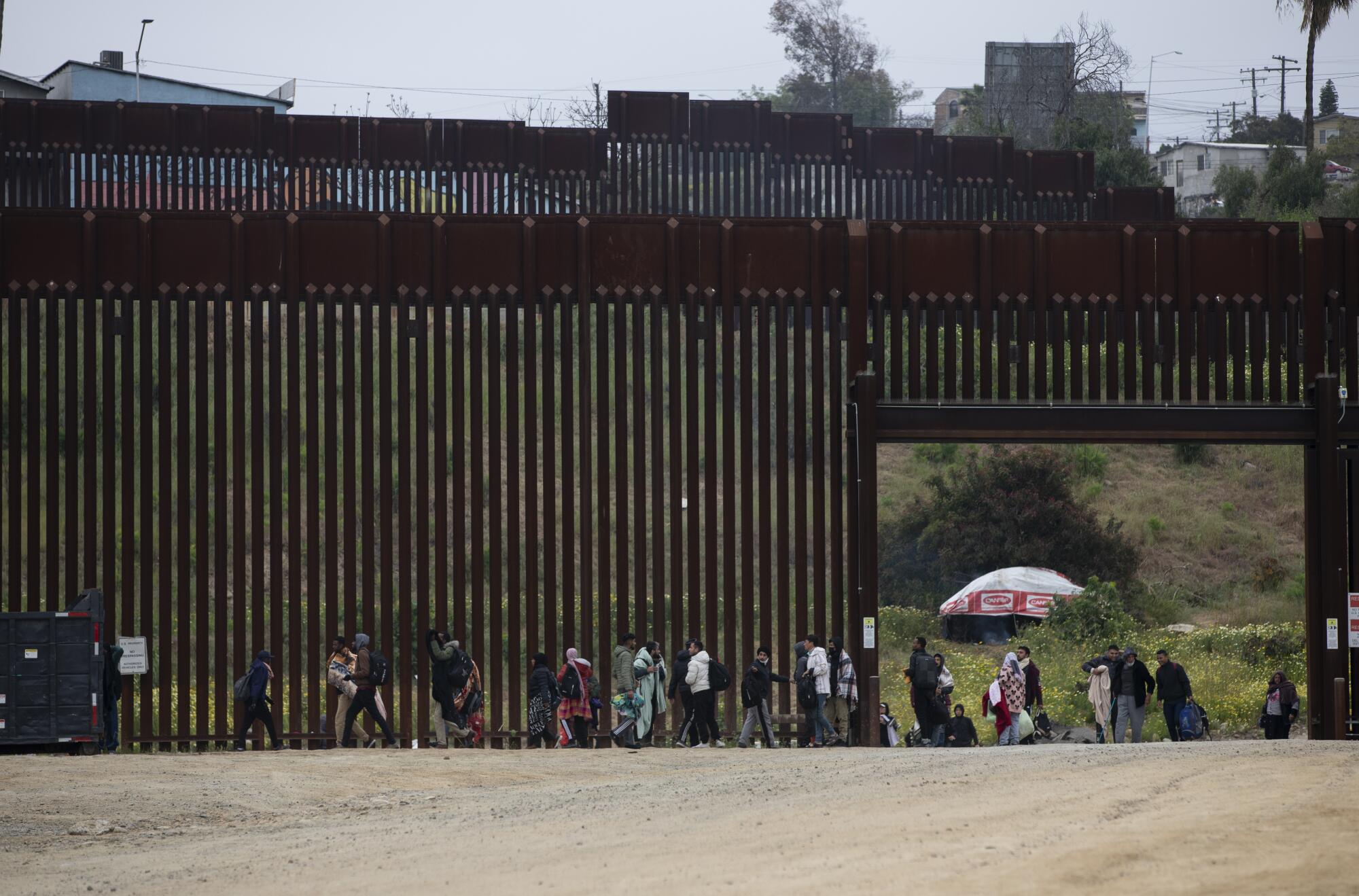
As the Union-Tribune arrived in the area Wednesday morning, a large vehicle gate in the secondary layer of wall suddenly opened. It is not clear how or why the gate opened. As the waiting migrants noticed that there was now a path open to them to try to leave, dozens ran out.
Border Patrol agents in marked and unmarked SUVS, as well as agents on ATVs, quickly stopped the migrants and then herded them back to the space between the fences, indicating that the migrants were not free to leave and thus were in the custody of law enforcement.
Shortly after, agents brought a plastic water cooler for the migrants. The migrants said that water was supposed to last the group, that they estimated to be nearly 150 people, for the next 24 hours.
One man from Somalia said he’d been among those who ran out.
“I am a refugee. We need protection,” he said. “We need help, emergency help. We are very critical.”
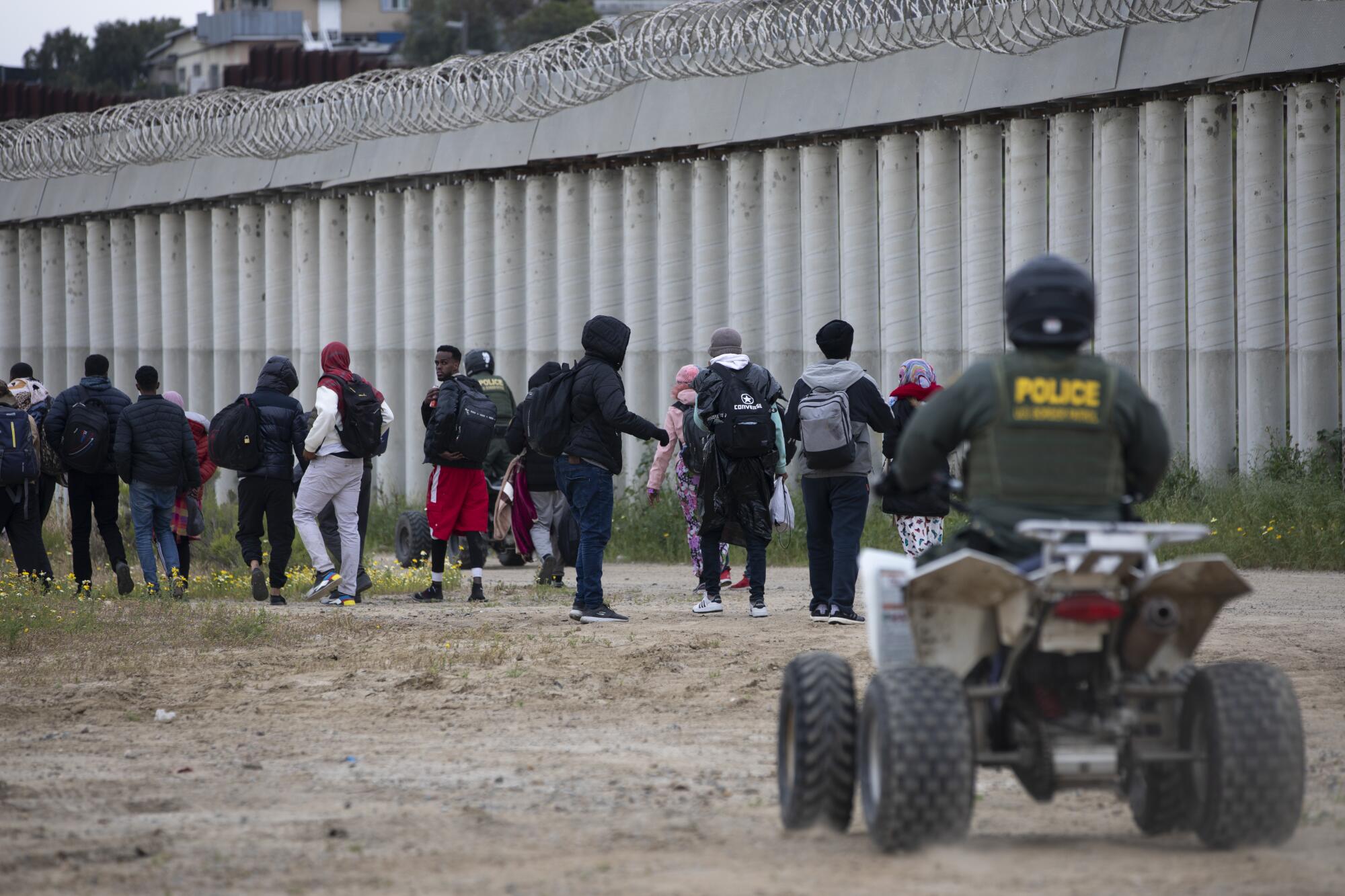
He noted that some of the people in the group were very sick because of waiting in the cold, and he said that one of the women was pregnant.
“We need justice,” added another man. “There isn’t any humanity here.”
Several said they feared that someone among them would soon die, especially with the approaching rain and increased cold it would bring.
“They tell us there’s a bus coming. They give us hope,” the man from Somalia said, referring to Border Patrol. “There’s no bus coming.”
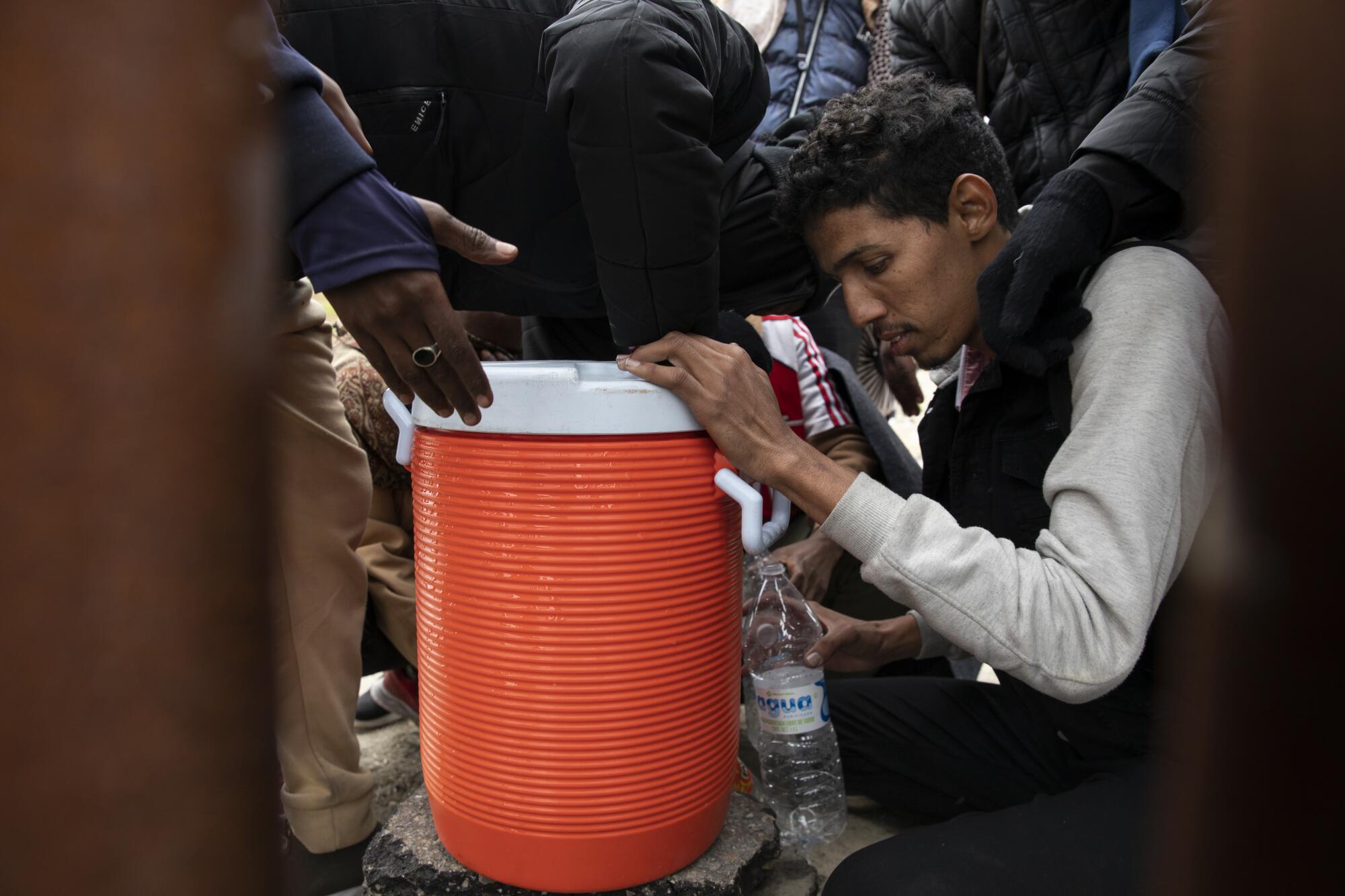
That evening, Nina Douglass, a member of the collective Friends of Friendship Park who has been monitoring the situation for months, brought more than $350 worth of food, blankets and plastic protective gear to help with the rain that had begun to fall.
When she arrived around 6 p.m., she said, TV crews were there filming as Border Patrol agents organized the migrants and began to take them to stations for processing. This was several hours after the Union-Tribune asked Border Patrol about the situation.
She felt relief, she said, both for the migrants and for herself. When she takes supplies to asylum seekers in the area, she worries that Border Patrol will arrest her, she said, as her group has faced harassment and threats of arrest from agents in the past.
“When we got to the fence with food and blankets and tarps, the people got up and came running to the wall and thrusting their hands through and pleading for blankets especially,” Douglass recalled.
She said one woman approached her asking for help.
“She said, ‘I’m getting my period, and I have no way to keep myself clean,’ and she started crying,” Douglass said. “I began to cry. It was really wrenching.”
She said agents indicated to her that they wouldn’t be taking everyone, and that the food should go to the people left behind. Over about an hour or so, agents took all of the migrants that she could see, she said.
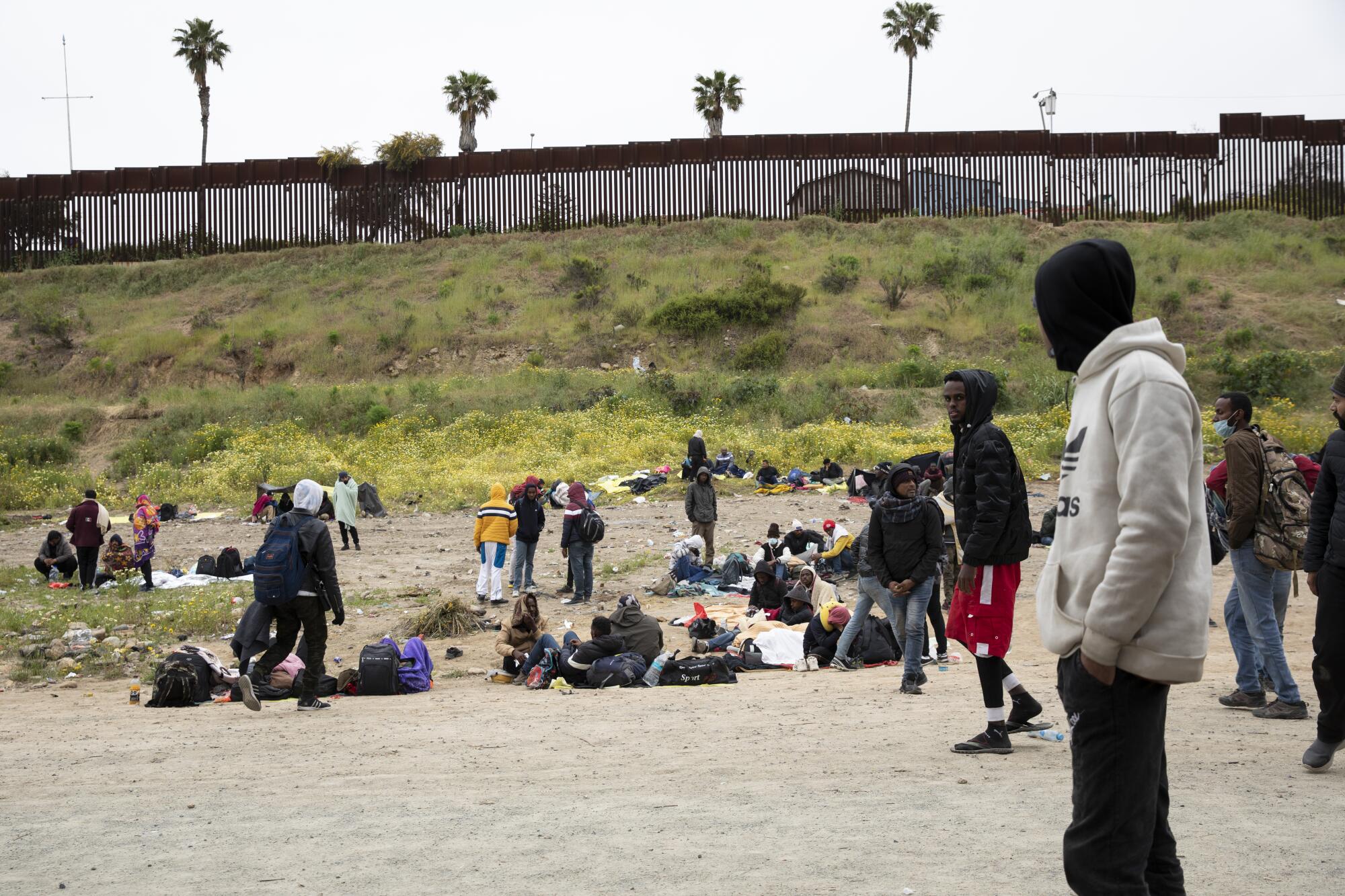
But on Thursday morning, Rios checked back at the site and met more migrants who said they, too, had been waiting for days. He said a Mexican church was providing food from the south side of the wall.
“Everything is wet,” he said. “They complained of cold temperature and rain and being hungry.”
According to activists, officials have indicated that this strategy of holding migrants between the walls for extended periods of time is likely to continue.
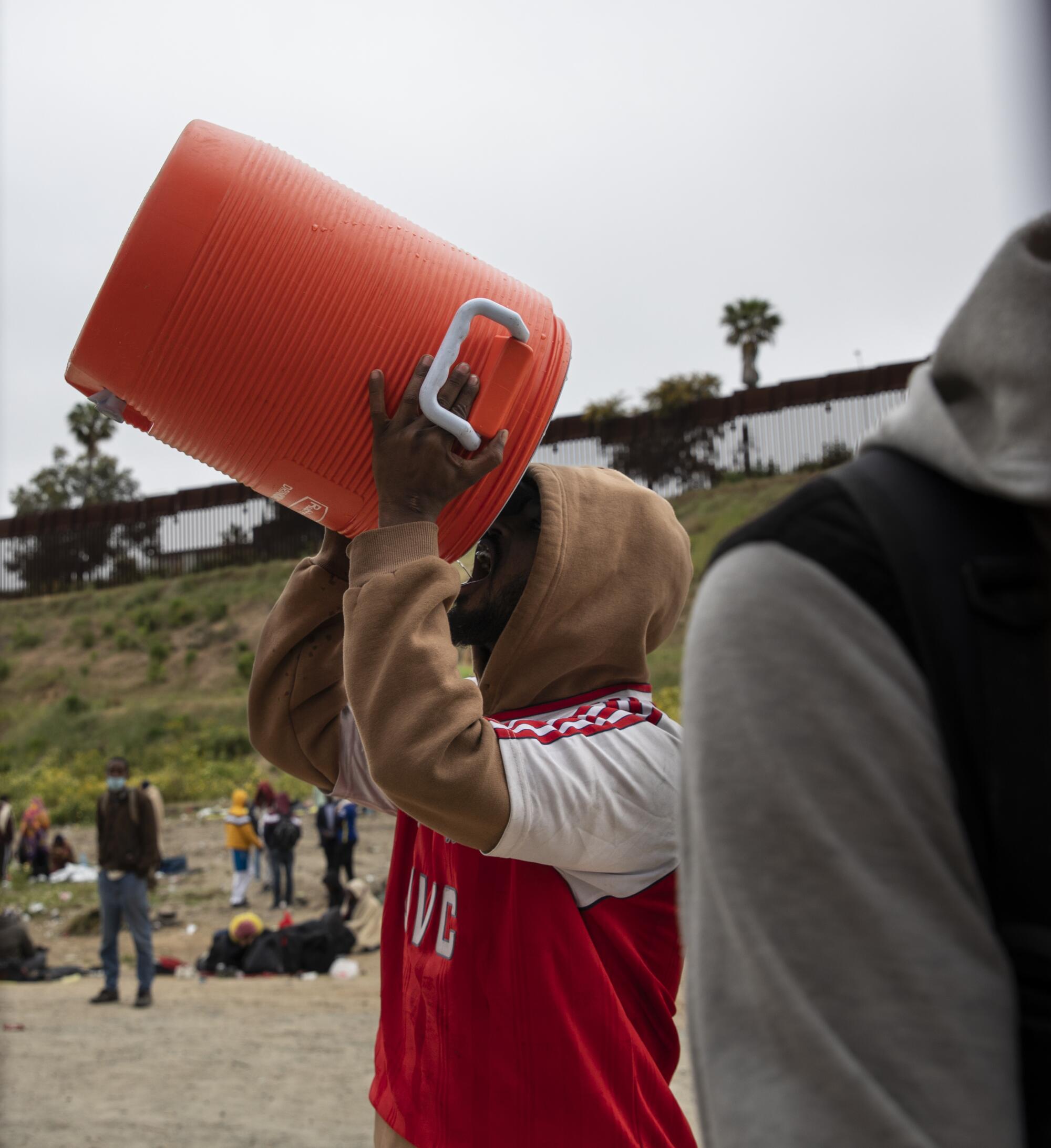
The San Diego Union-Tribune En Español staff writer Alexandra Mendoza contributed to this report.
More to Read
Sign up for Essential California
The most important California stories and recommendations in your inbox every morning.
You may occasionally receive promotional content from the Los Angeles Times.










